My research focuses on investigating the atmospheres of small exoplanets and the high-energy output of their host M stars.
Ground-based transmission spectroscopy of the nearby terrstrial world LTT 1445Ab
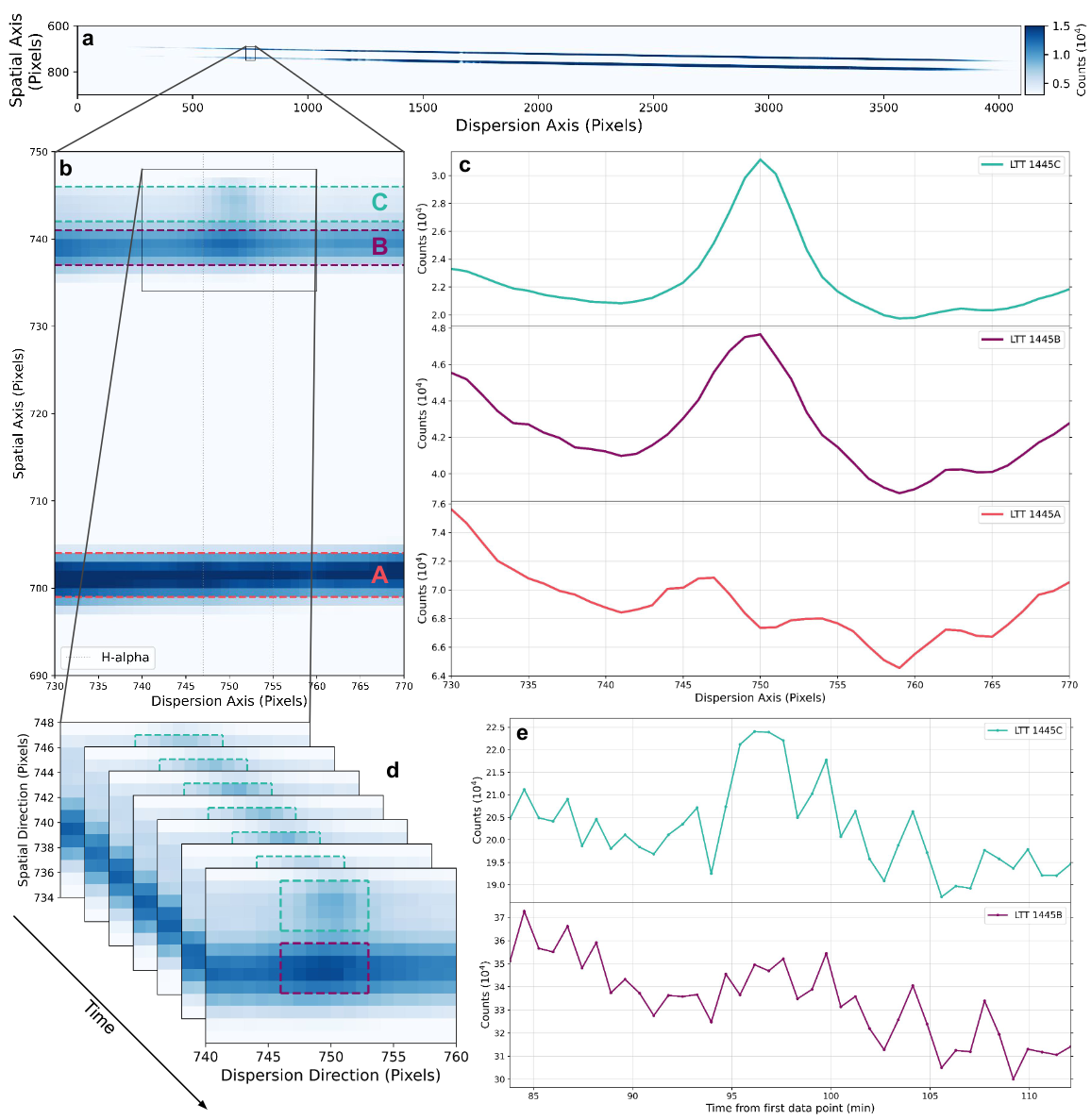
We use the Magellan II/LDSS3C to observe four transits of LTT 1445Ab, currently the closest terrestrial exoplanet orbiting an M dwarf. We determine that, like the other terrestrial worlds we have investigated, this planet does not posess a hydrogren- and helium-rich atmosphere. Upcoming observations by JWST (PI Berta-Thompson) will determine if this planet maintains an atmosphere at all. The LTT 1445 system is a hierarchical triple, with the tight LTT 1445BC binary blended with LTT 1445A in the TESS data (Winters, et al. 2019). With Magellan we can separate out the A, B, and C components and determine that both LTT 1445B and C exhibit H&alpha in emission, and that LTT 1445C is the origin of a flare we observe in our data.
Diamond-Lowe, et al. (2023)
Revisiting the K2-3 system and testing theories of small planet evolution
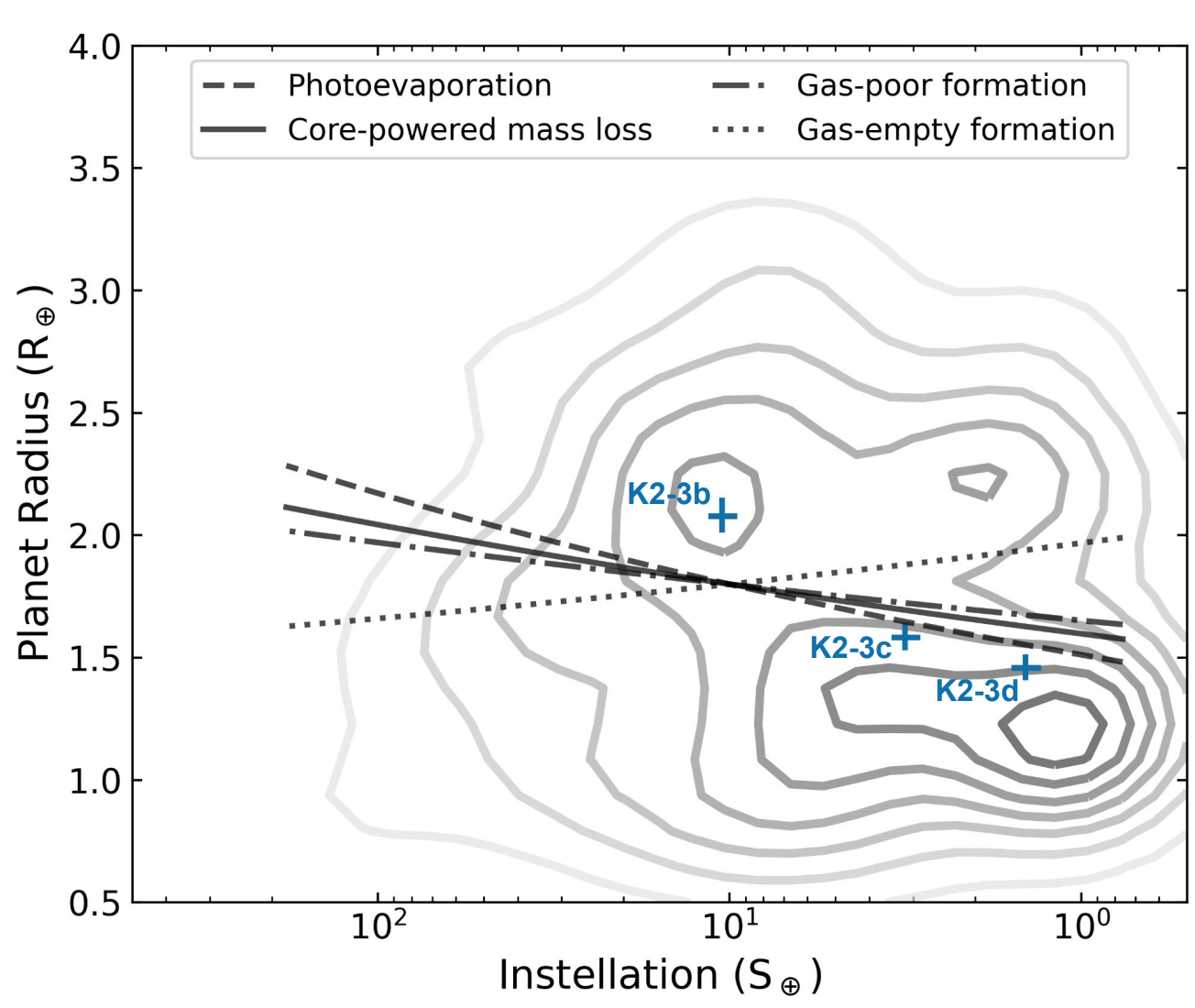
The three K2-3 planets were discovered in 2015, the early days of the K2 mission. We use ExofastV2 to simultaneously fit all of the available transit and radial velocity data to constrain the stellar and planetary parameters of this system. It turns out that the ordering of the K2-3 planets is difficult to explain with photoevaporation or core-powered mass loss, suggesting that more stochastic processes such as planet formation and migration are at play. This paper also drove us to understand more about how EV2's combination of transit and RV data can been the usual noise floors!
Diamond-Lowe, et al. (2022)
HLSP data at MAST
Eastman, Diamond-Lowe, & Tayar (2022)
Space-based ultraviolet spectrum of the mid-M dwarf LHS 3844
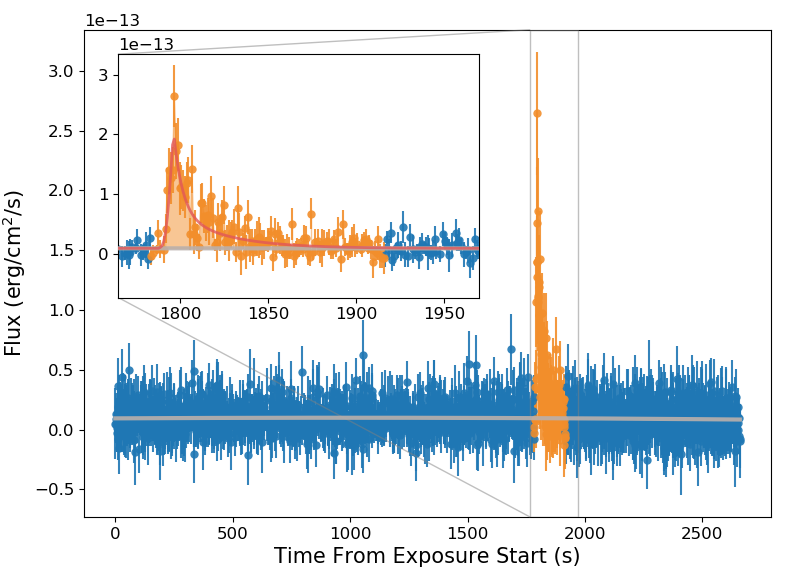
LHS 3844 is a mid-M dwarf that hosts the highly irradiated terrestrial exoplanet, LHS 3844b. Using the Hubble Space Telescope and Cosmic Origins Spectrograph we captured an ultraviolet spectrum of this nearby star. We detected a single flare in the far UV (shown here). Understanding the high-energy output of stars allows us to better understand the atmospheres (or lack thereof) of the planets that orbit them. We present a panchromatic spectrum from 1 to 105 Angstroms for the flare and quiescent states of LHS 3844.
Diamond-Lowe, et al. (2021)
HLSP data at MAST
AAS Journal Author Series
Ground-based transmission spectroscopy of LHS 3844b with 13 transits
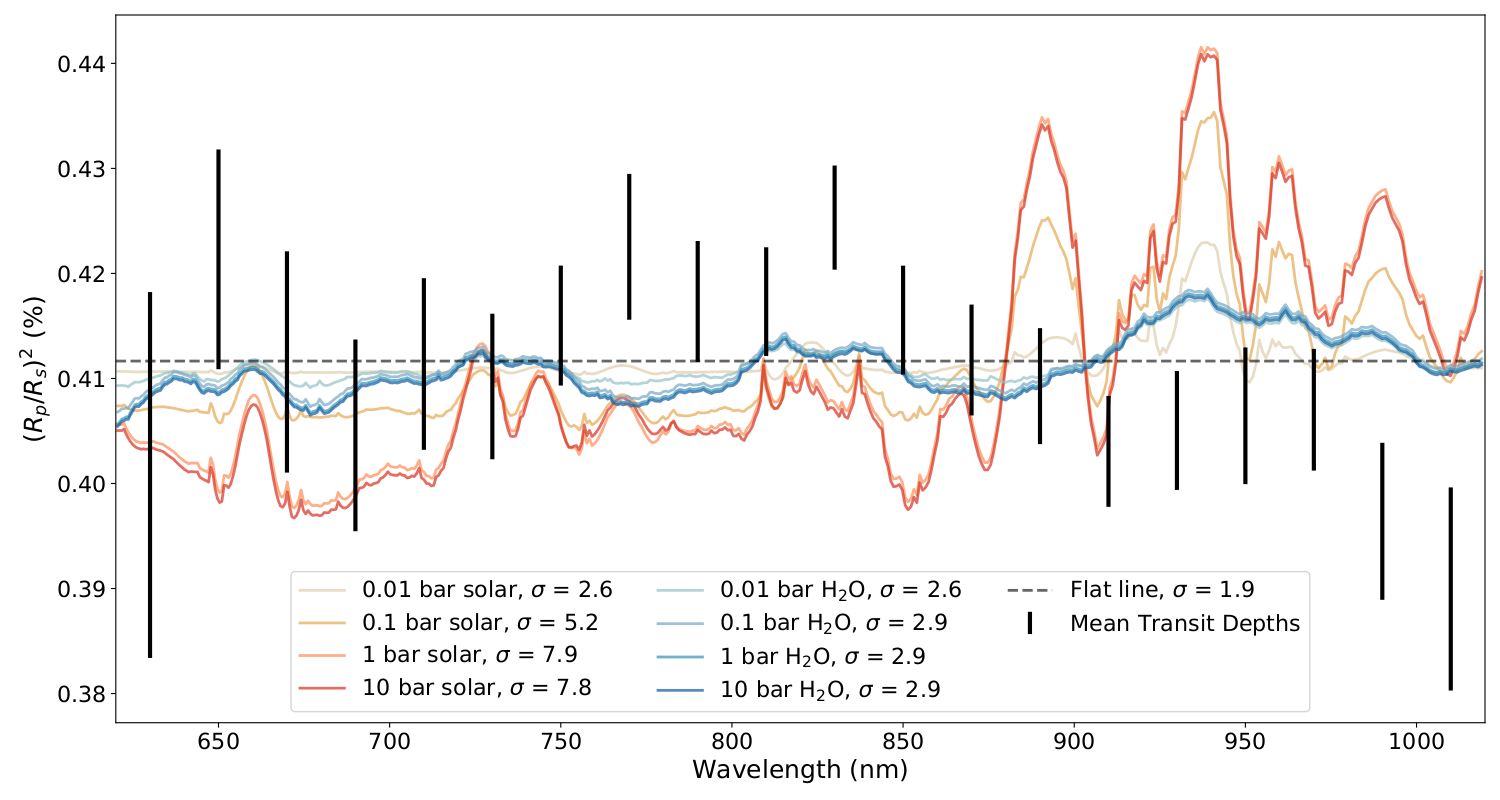
LHS 3844b is a highly irradiated terrestrial world orbiting a mid-M dwarf star. 100 hours of Spitzer data ruled out the presence of high mean molecular weight atmospheres of 10 bars or higher surface pressures (Kreidberg, et al. 2019). In this work we rule out low mean molecular weight atmospheres at surface pressures of 0.1 bars and greater, providing further evidence that LHS 3844b is likely a bare rock.
Diamond-Lowe, et al. (2020b)
Simultaneous ground-based transmission spectroscopy of LHS 1140b with Magellan I & II
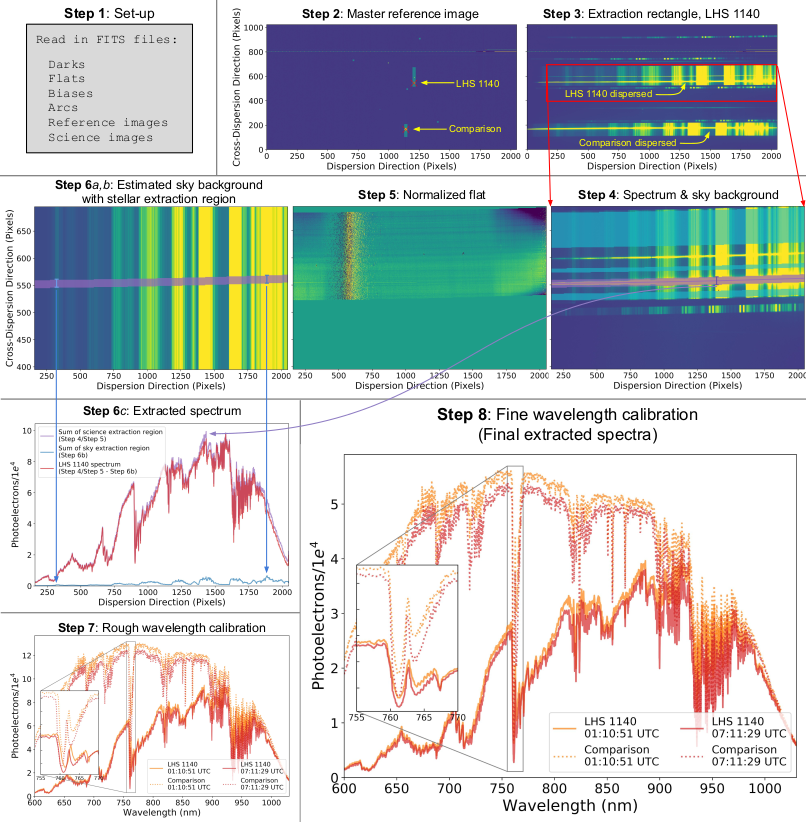
LHS 1140b is a terrestrial exoplanet orbiting in the habitable zone around an M4.5 star 15 parsecs away. This planet has a 25-day orbital period and a 2-hour transit duration. As such is it difficult to observe transits of LHS 1140b from the ground. We captured two transits of LHS 1140b simultaneously with the twin Magellan telescopes at Las Campanas Observatory in Chile. We share the results and explain the process of multi-object spectroscopy for exoplanet atmospheres.
Diamond-Lowe, et al. (2020a)
Ground-based transmission spectroscopy of GJ 1132b
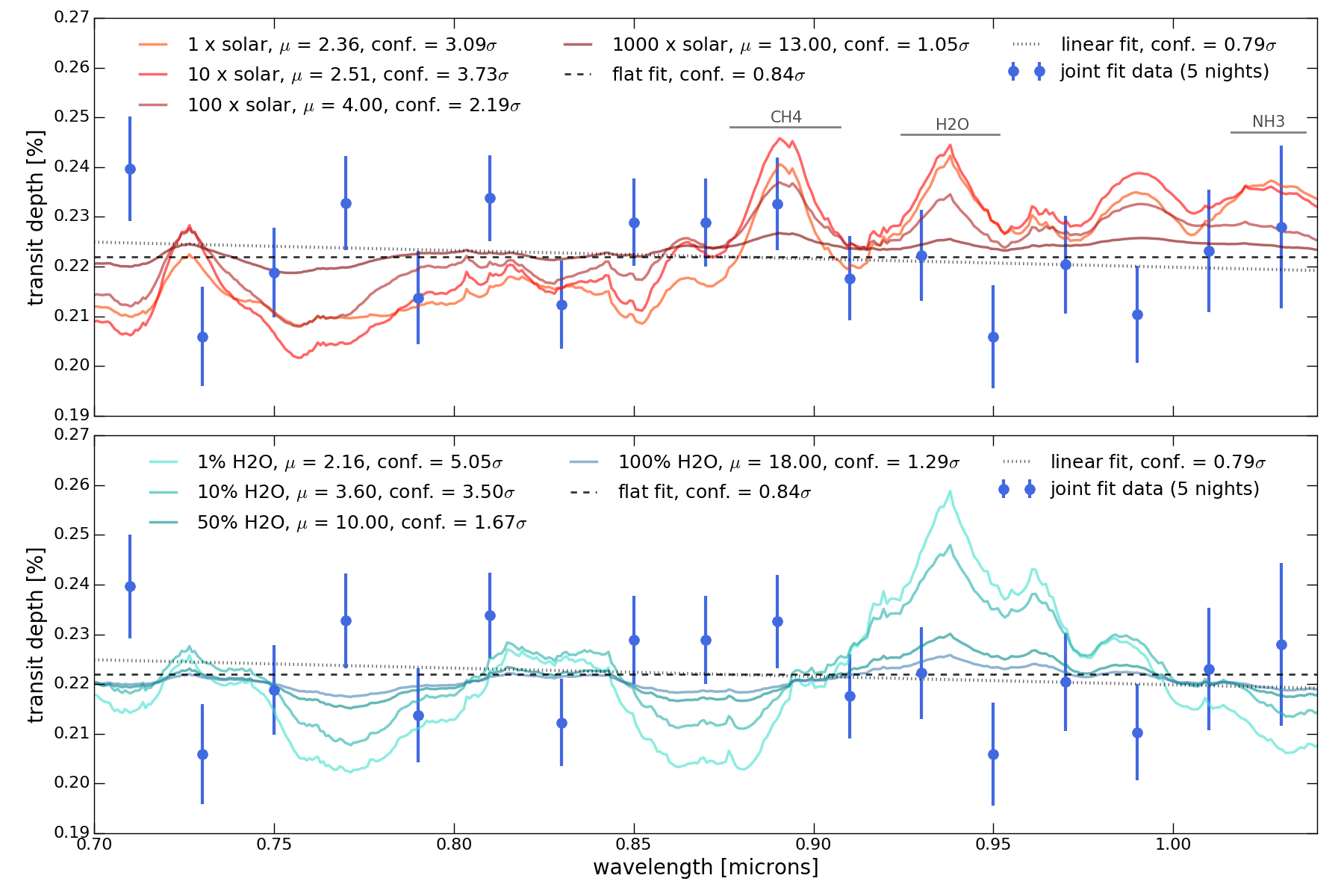
GJ 1132b is a terrestrial exoplanet orbiting an M4.5 star 12 parsecs away. With a radius of 1.2 Earth radii and a mass of 1.6 Earth masses, this world is a rocky one. GJ 1132b orbits close to its host star and receives 19 times Earth's insolation, meaning that though this world has a solid surface, it is too hot to support liquid water and too irradiated to support life. We observed five transits of GJ 1132b with the Magellan Clay telescope and the LDSS3C spectrograph at Las Campanas Observatory in Chile. The transmission spectrum we construct from a joint fit to all of our spectro-photometric data disfavors a clear, 10x solar metallicity atmosphere at 3.7σ confidence and a 10% H2O, 90% H2 atmosphere at 3.5σ confidence. The data are consistent with a featureless spectrum, implying that GJ 1132b has a high mean molecular weight atmosphere or no atmosphere at all.
Diamond-Lowe, et al. (2018)
No thermal inversion in the atmosphere of HD 209458b
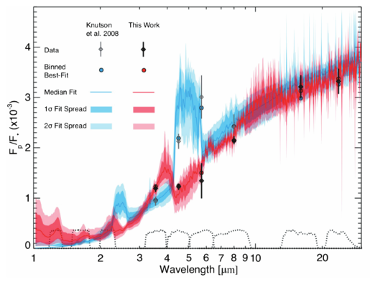
This archetypal hot Jupiter was once thought to have a thermal inversion in its upper atmosphere. We analyze secondary eclipses of this planet taken with the Spitzer Space Telescope in four photometric bandpasses. Our self-consistent analysis with the state-of-the-art POET pipeline, along with an atmospheric retrieval, reveals that this hot Jupiter is more consistent with a black body and does not host a thermal inversion. These results were corroborated with HST/WFC3 observations.
Diamond-Lowe, et al. (2014)
Line, et al. (2016)







